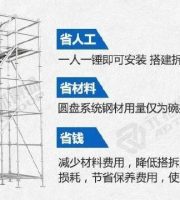However, the actual construction party can provide evidence to prove that the settlement is made based on the provisions of the construction contract between the employer and the contractor regarding the settlement method of the project price.
Source: Risk prevention in construction projects.
.
This article is interpreted to protect the interests of migrant workers and other construction workers, break through the principle of Privity of contract, and allow the actual constructor to request the employer to assume responsibility within the scope of unpaid project funds.
with the construction enterprise, the corresponding legal relationship can be determined based on the specific situation.
The people’s court shall investigate the project payments owed by the employer to the contractor and the actual construction costs owed by the contractor.
Due to the fact that the employer is not the other party of the actual construction contractor’s contract, the payment responsibility borne by the employer to the actual construction contractor within the scope of the unpaid construction project price is a supplementary responsibility.
If the actual construction party claims rights with the employer as the defendant, the people’s court shall add the subcontractor or illegal subcontractor as the third party in this case.
After the employer pays the corresponding project funds to the actual construction contractor, the corresponding debt and debt relationships between all parties shall be extinguished.
The settlement of the project price within the construction scope between the actual construction party and its counterpart is only binding on both parties to the agreement, and cannot be binding on the employer.
This article will discuss it in conjunction with the discussion of the Sixth Circuit Court of the Supreme People’s Court.
There is no direct or nominal contractual relationship between the actual construction contractor and the employer, and there is no labor personnel relationship or labor service relationship between the actual construction contractor and the contractor who has signed subcontracting contracts, illegal subcontracting contracts, or construction enterprises that have lent qualifications.
If the contractor requests the employer to bear responsibility within the scope of the outstanding project payment, the people’s court shall not accept it.
In response to this provision, there are many controversies in judicial practice, such as the specific identification of the actual construction personnel, such as how to handle project funds in the case of borrowing qualifications.
According to Article 43 of the Construction judicial interpretation (I), if the actual constructor brings a lawsuit against the subcontractor or illegal subcontractor, the people’s court shall accept it according to law.
The sub contractors, sub subcontractors and other intermediate link subjects who have not carried out the actual construction are not the actual constructors, and they cannot claim rights against the Employer through breaking the relativity of the contract.
The actual construction personnel shall bear the burden of proof for the achievement of the payment conditions for the project funds, the amount of outstanding project funds, etc; The employer shall bear the burden of proof if they raise objections such as the amount paid for the project and the irrelevance of the outstanding project funds.
The settlement of the project price between the employer and the contractor has a binding force on the actual construction party, except where the rights and obligations of each party have clear agreements or are not suitable for the actual construction party in nature, and the actual construction party can provide evidence to prove that the employer and the contractor intentionally harmed the interests of the actual construction party through settlement.
If the project is subcontracted layer by layer or multiple times, the actual construction contractor cannot claim the project payment from intermediate entities such as contractors and subcontractors who have no contractual relationship with them, except for those where the employer has already paid all the project payment to the contractors and subcontractors.
After identifying the amount owed by the employer to the subcontractor or illegal subcontractor for the construction project price, the court shall adjudge the employer to be liable to the actual construction party within the scope of the owed construction project price.
If the contractor has already sued the employer for payment of the project payment, the actual construction contractor may apply to participate as a third party in the litigation before the end of the first instance court debate.
The actual construction personnel are the units or individuals who have actually completed the construction tasks in the above-mentioned illegal situations.
The basic principle of handling construction contract disputes related to the actual constructor should not only accurately grasp the meaning of laws and judicial interpretation clauses, but also establish a judicial value orientation to protect the interests of legitimate and well-known civil subjects.
Generally speaking, the actual construction personnel include three types: subcontractors of subcontracting contracts, subcontractors of illegal subcontracting contracts, and units or individuals borrowing qualifications from external affiliated relationships.
More exciting, please click on the blue font above to follow us! Sincere construction guarantee, ensuring integrity; Provide a guarantee to serve the construction.
The actual construction party has the right to demand the employer to pay the outstanding project funds, as well as the right to claim interest on the outstanding project funds.
In principle, the interests protected by law by the actual construction personnel should not exceed the scope of rights of the legal construction subject.
If the internal contracting relationship of a construction enterprise and the construction activities carried out through cooperation, labor subcontracting, professional subcontracting, etc.
In principle, the parties involved should request their respective debtors to assume responsibility based on their respective legal relationships.



